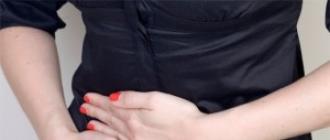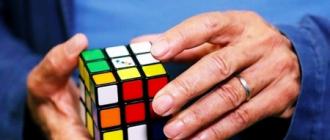Creation of a wind generator does not necessarily mean the manufacture of a large and powerful complex capable of providing electricity to a whole house or group of consumers. You can make, which is, in fact, a working model of a serious installation. The purpose of such an event could be:
- Familiarization with the basics of wind energy.
- Joint learning activities with children.
- An experimental sample that precedes the construction of a large installation.
The creation of such a windmill does not require the use of a large amount of materials or tools, you can get by with improvised means. It is not necessary to count on the production of serious amounts of energy, but it may be enough to power a small LED lamp. The main problem that exists during creation is the generator. It is difficult to create it yourself, because the dimensions of the device are small. The easiest way is to use , allowing you to use it in generator mode.
Homemade windmill based on a stepper motor
Most often, when manufacture of low-power wind turbines use stepper motors. The peculiarity of their design is the presence of several windings. Usually, depending on the size and purpose, motors are made with 2, 4 or 8 windings (phases). When voltage is applied to them in turn, the shaft respectively rotates through a certain angle (step).
The advantage of stepper motors is the ability to produce a sufficiently large current at low rotational speeds. An impeller can be installed on the generator from a stepper motor without any intermediate devices - gears, gearboxes, etc. Electricity generation will be carried out with the same efficiency as other designs using overdrive gears.
The difference in speeds is very significant - to obtain the same result, for example, on a collector motor, a rotation speed of 10 or 15 times more will be required.
It is believed that using a generator from a stepper motor, you can charge batteries or batteries. mobile phones, but in practice, positive results are extremely rare. Basically, power supplies for small lamps are obtained.
The disadvantages of stepper motors include a significant effort required to start rotation. This circumstance reduces the sensitivity of the entire , which can be somewhat corrected by increasing the area and span of the blades.
You can find these motors in old floppy drives, scanners, or printers. Alternatively, you can purchase new engine if in stock desired device will not appear. For greater effect, larger motors should be chosen, they are capable of delivering a large enough voltage so that it can somehow be used.
Wind generator from parts from the printer
One of suitable options- using a stepper motor from the printer. It can be removed from a failed old device, each printer has at least two such motors. Alternatively, you can purchase a new one that has not been used. It is capable of generating power of about 3 watts even with light wind, typical for most regions of Russia. The voltage that can be reached is 12 V or more, which makes it possible to consider the device as a battery charging capability.
stepper motor produces alternating voltage. For the user, it is necessary first of all to straighten it. You will need to create a diode rectifier, which will require 2 diodes for each coil. You can also directly connect the LED to the coil terminals, with a sufficient rotation speed this is enough.
The rotor impeller is easiest to install directly on the motor shaft. To do this, it is necessary to make a central part that can fit tightly on the shaft. To strengthen the fixation of the impeller, it is necessary to drill a hole and cut a thread in it. Subsequently, a locking screw will be screwed into it.
For the manufacture of blades, polypropylene sewer pipes or other suitable materials are usually used. The main condition is low weight and sufficient strength, since the blades sometimes pick up quite a decent speed. The use of unreliable materials can create an undesirable situation where the impeller falls apart on the go.
blades
Usually 2 blades are made, but more can be made. It must be remembered that large blade area increases wind turbine KIEV, but in parallel with this, the frontal load on the impeller, which is transmitted to the motor shaft, increases. The manufacture of small blades is also not recommended, as they will not be able to overcome the sticking of the shaft at the start of rotation.
To be able to rotate the windmill around the vertical axis, you need to make a special knot. The difficulty in this lies in the need to ensure the immobility of the cable coming from the generator. Since the device has rather a decorative purpose, it is usually easier to approach the issue - the consumer is installed directly on the generator housing, excluding the presence of a long cable. Otherwise, you will have to mount a system like a brush collector, which is irrational and time consuming.
Mast
The assembled windmill must be installed at a height of at least 3 meters. Wind flows near the earth's surface have an unstable direction caused by turbulence. Climbing to some height will help to get more even flows. For self installation a tail stabilizer is installed into the wind along the axis of rotation, which plays the role of a weather vane. It is made from any piece of plastic, aluminum plate or other material at hand.
As a generator for a windmill, a stepper motor (SM) for a printer is suitable. Even at a low rotation speed, it generates power of about 3 watts. The voltage can rise above 12 V, which makes it possible to charge a small battery.
Principles of use
Wind turbulence in the surface layers, characteristic of the Russian climate, leads to constant changes in its direction and intensity. Large wind generators with a power exceeding 1 kW will be inertial. As a result, they will not have time to fully unwind when the wind direction changes. This is also prevented by the moment of inertia in the plane of rotation. When a side wind acts on a working windmill, it experiences huge loads that can lead to its rapid failure.
It is advisable to use a low-power wind generator, made by hand, having a slight inertia. With their help, you can charge low-power mobile phone batteries or use LEDs to illuminate the cottage.
In the future, it is better to focus on consumers who do not require conversion of the generated energy, for example, for heating water. A few tens of watts of energy may well be enough to maintain the temperature hot water or for additional heating of the heating system so that it does not freeze in winter.
Electrical part
A generator in a windmill can install a stepper motor (SM) for a printer.
Even at a low rotation speed, it generates power of about 3 watts. The voltage can rise above 12 V, which makes it possible to charge a small battery. The rest of the generators work effectively at over 1000 rpm, but they won't work because the windmill rotates at 200-300 rpm. A gearbox is needed here, but it creates additional resistance and also has a high cost.
In generator mode, the stepper motor produces alternating current, which is easy to convert to constant using a couple of diode bridges and capacitors. The scheme is easy to assemble with your own hands.

By installing a stabilizer behind the bridges, we get a constant output voltage. For visual control, you can also connect an LED. To reduce voltage losses, Schottky diodes are used to rectify it.
In the future, it will be possible to create a windmill with a more powerful stepper motor. Such a wind generator will have a large starting moment. The problem can be eliminated by disconnecting the load during start-up and at low speeds.
How to make a wind generator
The blades can be made with your own hands from a PVC pipe. The desired curvature is selected if you take it with a certain diameter. The blank of the blade is drawn on the pipe, and then cut out with a cutting disc. The propeller span is about 50 cm, and the width of the blades is 10 cm. After that, a sleeve with a flange should be machined to fit the size of the SD shaft.

It is mounted on the motor shaft and fastened with additional screws, and plastic blades are attached to the flanges. The photo shows two blades, but you can make four by screwing two more similar ones at an angle of 90º. For greater rigidity, a common plate should be installed under the screw heads. It will press the blades closer to the flange.
Plastic products do not last long. Such blades will not withstand continuous wind at a speed of more than 20 m / s.
The generator is inserted into a piece of pipe, to which it is bolted.

A weather vane is attached to the pipe from the end, which is an openwork and lightweight construction made of duralumin. The wind generator rests on a welded vertical axis, which is inserted into the mast tube with the possibility of rotation. A thrust bearing or polymer washers can be installed under the flange to reduce friction.
In most designs, the windmill contains a rectifier that is attached to a moving part. It is impractical to do this because of the increase in inertia. It is quite possible to place the electric board at the bottom, and bring the wires from the generator down to it. Typically, up to 6 wires come out of a stepper motor, corresponding to two coils. They need slip rings to transfer electricity from the moving part. It is quite difficult to install brushes on them. The current collection mechanism may be more complicated than the wind generator itself. It would also be better to place the windmill so that the generator shaft is vertical. Then the wires will not be braided around the mast. Such wind generators are more complicated, but inertia decreases. A bevel gear will be just right here. At the same time, you can increase the speed of the generator shaft by choosing the necessary gears with your own hands.
Having fixed the windmill at a height of 5-8 m, you can begin to test and collect data on its capabilities in order to install a more advanced design in the future.
Currently, vertical-axis wind turbines are becoming popular.

Some designs can even withstand hurricanes well. Combined designs that work in any wind have proven themselves well.
Conclusion
A low-power wind generator works reliably due to its low inertia. It is easily made at home and is mainly used to recharge small batteries. It can be useful in a country house, in the country, on a hike when there are problems with electricity.
Cycling past summer cottages, I saw a working wind generator. Large blades rotated slowly but surely, the weather vane oriented the device in the direction of the wind.
I wanted to implement a similar design, albeit not capable of generating enough power to provide “serious” consumers, but still working and, for example, charging batteries or powering LEDs.
One of the most effective options for a small homemade wind turbine is to use stepper motor(SHD) (English) stepping (stepper, step) motor) - in such a motor, the rotation of the shaft consists of small steps. The windings of a stepper motor are combined into phases. When current is applied to one of the phases, the shaft moves one step.
These engines are low-speed and a generator with such an engine can be connected without a gearbox to a wind turbine, Stirling engine or other low-speed power source. When used as a generator of a conventional (collector) engine direct current to achieve the same results would require 10-15 times higher speed.
A feature of the stepper is a fairly high starting torque (even without an electrical load connected to the generator), reaching 40 grams of force per centimeter.
The efficiency of the generator with stepper motor reaches 40%.
To check the performance of a stepper motor, you can connect, for example, a red LED. By rotating the motor shaft, you can observe the glow of the LED. The polarity of the LED connection does not matter, as the motor generates alternating current.
There are enough of these powerful engines are five-inch floppy drives, as well as old printers and scanners.
For example, I have a SD from an old 5.25″ floppy drive that worked as part of ZX Spectrum– compatible computer “Byte”.
Such a drive contains two windings, from the ends and the middle of which conclusions are drawn - in total, six wires:
first winding coil 1) - blue (English) blue) and yellow (eng. yellow);
second winding coil 2) - red (eng. red) and white (eng. white);
brown (English) brown) wires - conclusions from the midpoints of each winding (eng. center taps).

disassembled stepper motor
The rotor of the engine is visible on the left, on which “striped” magnetic poles are visible - north and south. To the right is the stator winding, consisting of eight coils.
The resistance of half the winding is
I used this motor in my original wind turbine design.
My less powerful stepper motor T1319635 firms Epoch Electronics Corp. from the scanner HP Scanjet 2400 It has five outputs (unipolar motor):

first winding coil 1) - orange (English) orange) and black (eng. black);
second winding coil 2) - brown (eng. brown) and yellow (eng. yellow);
red (English) red) wire - leads connected together from the midpoint of each winding (eng. center taps).
The resistance of half of the winding is 58 ohms, which is indicated on the motor housing.
In an improved version of the wind generator, I used a stepper motor Robotron SPA 42/100-558, produced in the GDR and designed for a voltage of 12 V:

There are two options for the location of the axis of the impeller (turbine) of the wind generator - horizontal and vertical.
advantage horizontal(most popular) location axis, located in the direction of the wind, is a more efficient use of wind energy, the disadvantage is the complexity of the design.
I chose vertical arrangement axes - VAWT (vertical axis wind turbine), which greatly simplifies the design and does not require orientation to the wind . This option is more suitable for roof mounting, it is much more effective in conditions of rapid and frequent changes in wind direction.
I used a type of wind turbine called a Savonius wind turbine. Savonius wind turbine). It was invented in 1922 Sigurd Johannes Savonius) from Finland.

Sigurd Johannes Savonius
The operation of the Savonius wind turbine is based on the fact that the resistance (Eng. drag) to the oncoming air flow - the wind of the concave surface of the cylinder (blade) is greater than the convex one.
Aerodynamic drag coefficients ( English drag coefficients) $C_D$

concave half of the cylinder (1) - 2.30
convex half of the cylinder (2) - 1.20
flat square plate - 1.17
concave hollow hemisphere (3) - 1.42
convex hollow hemisphere (4) - 0.38
The indicated values are given for Reynolds numbers (eng. Reynolds numbers) in the range $10^4 – 10^6$. The Reynolds number characterizes the behavior of a body in a medium.
Body resistance force to air flow $ =<<1 \over 2>S\rho
Such a wind turbine rotates in the same direction, regardless of the direction of the wind:

A similar principle of operation is used in a cup anemometer (eng. cup anemometer)– instrument for measuring wind speed:

Such an anemometer was invented in 1846 by the Irish astronomer John Thomas Romney Robinson ( John Thomas Romney Robinson):

Robinson believed that the cups in his four-cup anemometer moved at a speed equal to one third of the wind speed. In reality, this value ranges from two to a little more than three.
Currently, three-cup anemometers, developed by Canadian meteorologist John Patterson, are used to measure wind speed ( John Patterson) in 1926:

DC brushed motor generators with a vertical microturbine are sold at eBay for about $5:

Such a turbine contains four blades located along two perpendicular axes, with an impeller diameter of 100 mm, a blade height of 60 mm, a chord length of 30 mm, and a segment height of 11 mm. The impeller is mounted on the shaft of the DC commutator micromotor with the marking JQ24-125p70. The rated supply voltage of such a motor is 3. 12 V.
The energy generated by such a generator is enough to light up a “white” LED.
Savonius wind turbine rotation speed cannot exceed wind speed , but this design is characterized high torque (English) torque).
The efficiency of a wind turbine can be estimated by comparing the power generated by the wind generator with the power contained in the wind blowing around the turbine:
$P =<1\over 2>\rho S
Initially, the impeller of my generator used four blades in the form of segments (halves) of cylinders cut from plastic pipes:

segment length - 14 cm;
segment height - 2 cm;
segment chord length - 4 cm;
I installed the assembled structure on a fairly high (6 m 70 cm) wooden mast from a bar, attached with self-tapping screws to a metal frame:

The downside of the generator was enough high speed wind required to spin the blades. To increase the surface area, I used blades cut from plastic bottles:

segment length - 18 cm;
segment height - 5 cm;
segment chord length - 7 cm;
the distance from the beginning of the segment to the center of the axis of rotation is 3 cm.
The problem turned out to be the strength of the blade holders. At first I used perforated aluminum strips from a Soviet children's designer 1 mm thick. After several days of operation, strong gusts of wind led to a break in the slats (1). After this failure, I decided to cut out the blade holders from foil textolite (2) with a thickness of 1.8 mm:

The strength of textolite for bending perpendicular to the plate is 204 MPa and is comparable to the bending strength of aluminum - 275 MPa. But the modulus of elasticity of aluminum $E$ (70000 MPa) is much higher than that of textolite (10000 MPa), i.e. Texolite is much more elastic than aluminium. This, in my opinion, taking into account the greater thickness of the textolite holders, will provide much greater reliability of fastening the wind turbine blades.
The wind generator is mounted on a mast:

Trial operation of a new version of the wind generator showed its reliability even with strong gusts of wind.
The disadvantage of the Savonius turbine is low efficiency – only about 15% of the wind energy is converted into shaft rotational energy (this is much less than can be achieved with wind turbine Darya(English) Darrieus wind turbine)), using lifting force (eng. lift). This type of wind turbine was invented by the French aircraft designer Georges Darier. (Georges Jean Marie Darrieus) - 1931 U.S. Patent #1,835,018 .


The disadvantage of the Darrieus turbine is that it has very poor self-starting (the turbine must already be spinning up to generate torque from the wind).
Converting the electricity generated by the stepper motor
The stepper motor leads can be connected to two Schottky bridge rectifiers to reduce the voltage drop across the diodes.
You can use popular Schottky diodes 1N5817 with a maximum reverse voltage of 20 V, 1N5819- 40 V and a maximum direct average rectified current of 1 A. I connected the outputs of the rectifiers in series in order to increase the output voltage.
You can also use two mid-point rectifiers. Such a rectifier requires half as many diodes, but at the same time, the output voltage is also reduced by half.
Then the ripple voltage is smoothed out using a capacitive filter - a 1000 uF capacitor at 25 V. To protect against increased generated voltage, a 25 V zener diode is connected in parallel with the capacitor.

my wind turbine diagram

electronic unit of my wind generator
In windy weather, the voltage idle move at the output of the electronic unit of the wind generator reaches 10 V, and the short circuit current is 10 mA.
CONNECTING TO JOULE THIEF
Then the smoothed voltage from the capacitor can be applied to Joule Thief– low voltage DC-DC converter. I assembled such a converter based on germanium pnp- transistor GT308V ( VT) and pulse transformer MIT-4V (coil L1- conclusions 2-3, L2– conclusions 5-6):

Resistor resistance value R is selected experimentally (depending on the type of transistor) - it is advisable to use a variable resistor of 4.7 kOhm and gradually reduce its resistance, achieving stable operation of the converter.

my transducer Joule Thief
CHARGE OF IONISTORS (SUPERCAPACITORS)
Ionistor (supercapacitor, eng. supercapacitor) is a hybrid of a capacitor and a chemical current source.
Ionistor - non-polar element, but one of the conclusions can be marked with an “arrow” - to indicate the polarity of the residual voltage after it has been charged at the factory.
For initial research, I used an ionistor 5R5D11F22H with a capacity of 0.22 F for a voltage of 5.5 V (diameter 11.5 mm, height 3.5 mm):
I connected it through a diode to the output Joule Thief through a germanium diode D310.
To limit the maximum charging voltage of the ionistor, you can use a zener diode or a chain of LEDs - I use a chain of two red LEDs:

To prevent the discharge of an already charged ionistor through the limit LEDs HL1 And HL2 I added another diode - VD2.
My homemade wind generator on a stepper motor, My exciting and dangerous experiments
My self-made wind generator on a stepper motor While cycling past summer cottages, I saw a working wind generator. Large blades slowly but surely rotated, weather vane
Stepper motor as a generator?
I had a stepper motor lying around and I decided to try to use it as a generator. The engine was removed from an old dot matrix printer, the inscriptions on it are as follows: EPM-142 EPM-4260 7410. The engine was unipolar, which means that this engine has 2 windings with a tap from the middle, the winding resistance was 2x6 ohm.
For the test, another motor is needed to spin up the stepper. The design and mounting of engines are shown in the figures below:
 We smoothly start the engine so that the rubber band does not fly off. It must be said that high revs it still flies, so the voltage was not raised above 6 volts.
We smoothly start the engine so that the rubber band does not fly off. It must be said that high revs it still flies, so the voltage was not raised above 6 volts.
 We connect the voltmeter and start testing, first we measure the voltage.
We connect the voltmeter and start testing, first we measure the voltage. 
 I think nothing needs to be explained and everything is clear from the photo below. The voltage was 16 volts, the speed of the spinning engines is not large, I think if you spin it more strongly, you can squeeze out all 20 volts.
I think nothing needs to be explained and everything is clear from the photo below. The voltage was 16 volts, the speed of the spinning engines is not large, I think if you spin it more strongly, you can squeeze out all 20 volts.


We set the voltage to a little less than 5 volts, so that the stepper motor after the bridge gives out about 12 volts.
 Shines! At the same time, the voltage dropped from 12 volts to 8 and the engine began to spin up a little more slowly. The short-circuit current without the LED strip was 0.08A - let me remind you that the spin-up motor did NOT work at full power, and do not forget about the second winding of the stepper motor, you just can’t parallel them, but I didn’t want to assemble the circuit.
Shines! At the same time, the voltage dropped from 12 volts to 8 and the engine began to spin up a little more slowly. The short-circuit current without the LED strip was 0.08A - let me remind you that the spin-up motor did NOT work at full power, and do not forget about the second winding of the stepper motor, you just can’t parallel them, but I didn’t want to assemble the circuit.
 I think you can make a good generator out of a stepper motor, attach it to a bicycle, or make a wind generator based on it.
I think you can make a good generator out of a stepper motor, attach it to a bicycle, or make a wind generator based on it.
Stepper motor as a generator? Meander - entertaining electronics
Stepper motor as a generator? I had a stepper motor lying around and I decided to try to use it as a generator. The engine was removed from an old dot matrix printer, the inscriptions
A stepper motor is not only a motor that drives all kinds of devices (printer, scanner, etc.), but also a good generator! The main advantage of such a generator is that it does not need high speed. In other words, even at low speeds, the stepper motor generates a lot of energy. That is, a conventional bicycle generator requires initial revolutions until the lamp begins to shine with a bright light. This disadvantage disappears when using a stepper motor.
In turn, the stepper motor has a number of disadvantages. The main one is a large magnetic sticking.
Anyway. First we need to find a stepper motor. Here the rule works: The larger the engine, the better.
Let's start with the biggest one. I ripped it out of the plotter, it's such a big printer. The engine looks pretty big.
Before I show you the stabilization and power circuit, I want to show you the method of attaching to your bike.

Here is another version with a smaller engine.


I think each of you during the construction will choose the most suitable option for him.
Well, now it's time to talk about flashlights and power circuits. Of course, all lights are LED.
The rectification circuit is conventional: a block of rectifier diodes, a pair of high-capacity capacitors and a voltage regulator.
Usually there are 4 wires coming out of a stepper motor, corresponding to two coils. Therefore, there are two rectifier blocks in the figure.






